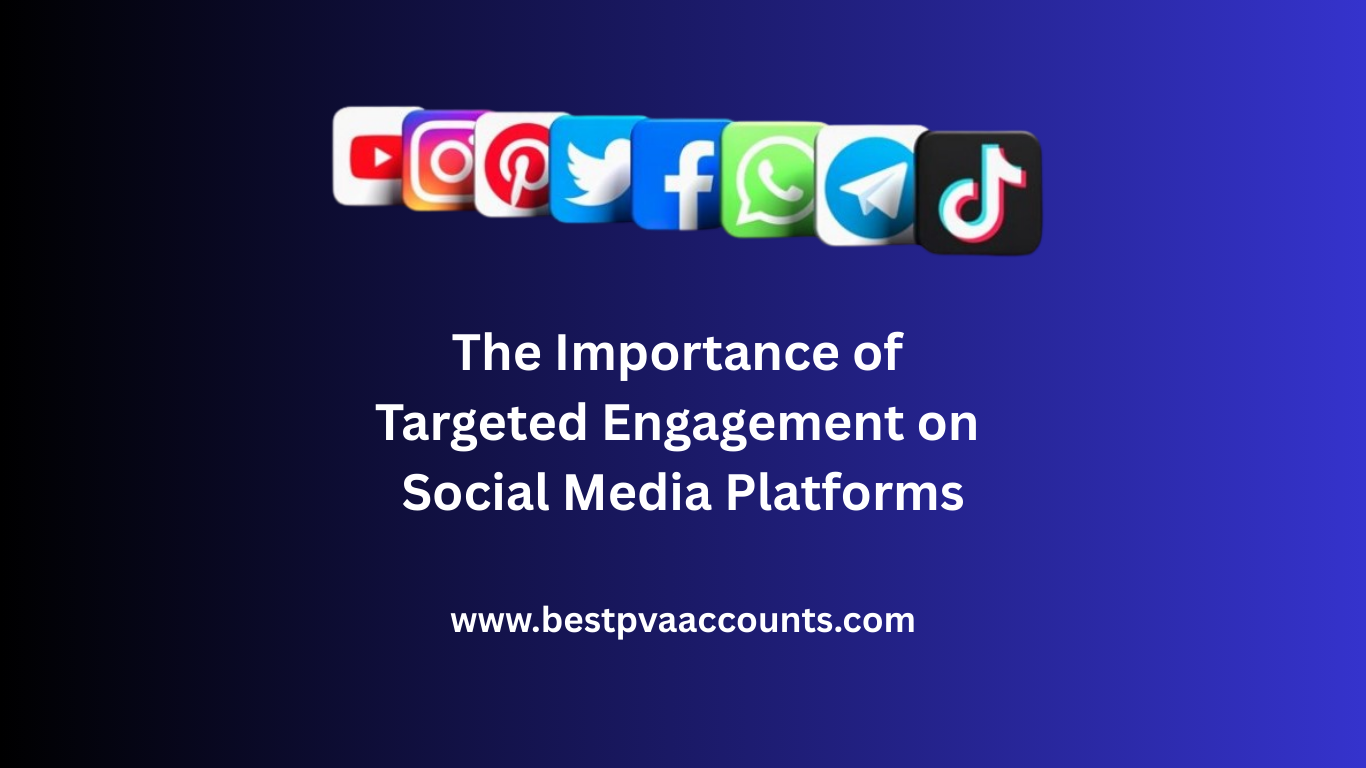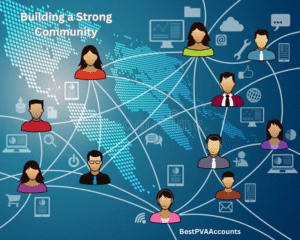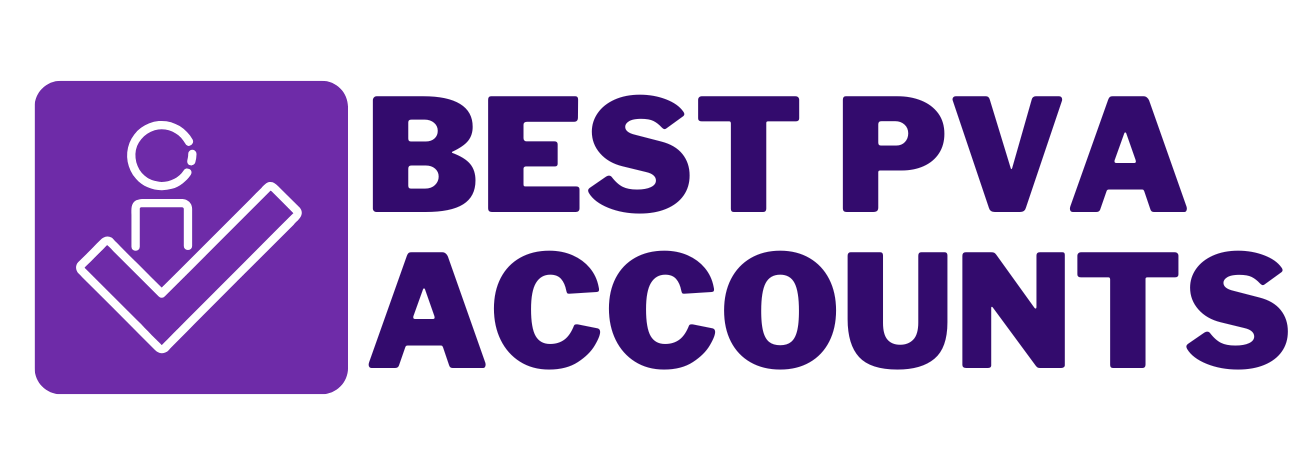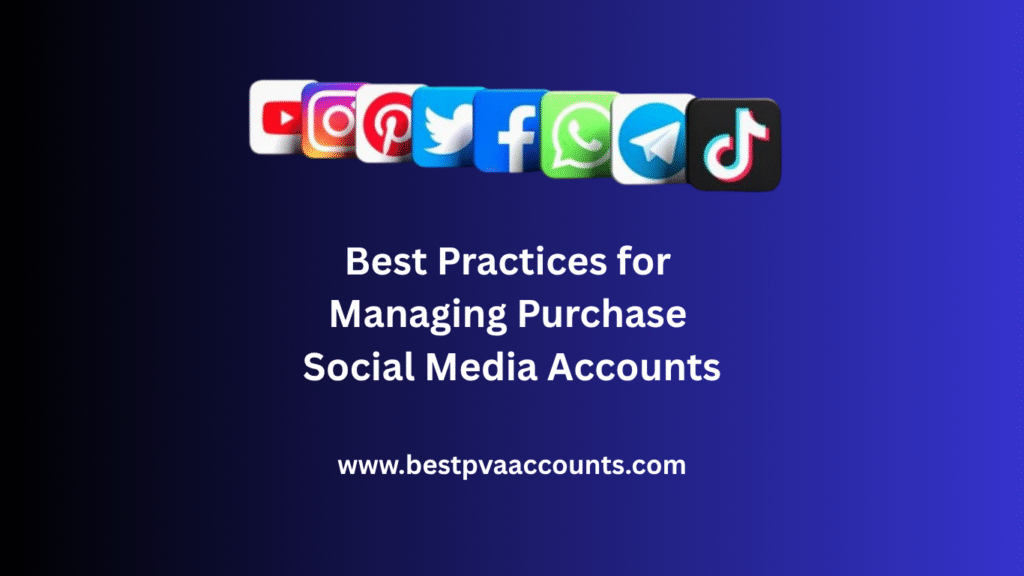The Importance of Targeted Engagement on Social Media Platforms

In today’s digital landscape, where algorithms rule and user attention spans are fleeting, mastering targeted engagement on social media platforms has become a crucial strategy for businesses. Whether you want to buy social media accounts or purchase social media accounts, understanding your audience and engaging with them effectively is key to standing out. This blog post will explore the importance of targeted engagement, its benefits, and practical steps to implement in your social media strategy.
Introduction to Engagement Strategies
Social media platforms provide businesses with unparalleled opportunities to connect with their audience. However, just having a presence on these platforms isn’t enough. Engagement is the currency of Social Media Platforms. The more you engage with your audience, the stronger your brand presence becomes. This section will offer an overview of engagement strategies and their significance.
- Why Engagement Matters
Engagement goes beyond likes and shares; it encompasses all interactions between a brand and its audience. High engagement rates signal to Social Media Platforms algorithms that your content is valuable, leading to increased visibility and reach. Engaged followers are also more likely to become loyal customers, advocates, and repeat buyers.
- Types of Engagement
Engagement can take many forms, including comments, shares, likes, direct messages, and mentions. Each type provides unique insights into how your audience perceives your brand and content. By analyzing these interactions, you can tailor your strategies to better meet your audience’s needs.
- The Role of Targeted Engagement
Targeted engagement focuses on interacting with specific segments of your audience. This approach ensures that your messages resonate with the right people, making your efforts more effective and efficient. Targeted engagement leverages data and analytics to understand audience behavior, preferences, and demographics.
Understanding Audience Segments
Knowing your audience is the foundation of any successful engagement strategy. Different segments of your audience have varying needs, preferences, and behaviors. By identifying these segments, you can create personalized content that speaks directly to each group.
- Demographic Segmentation
Demographic data such as age, gender, income, and education level can provide valuable insights into your audience. This information helps you tailor your content to align with the interests and preferences of different demographic groups.
- Psychographic Segmentation
Psychographic segmentation goes beyond demographics to explore your audience’s attitudes, values, interests, and lifestyles. Understanding these factors allows you to create content that resonates on a deeper level, fostering stronger connections with your audience.
- Behavioral Segmentation
Behavioral segmentation examines how your audience interacts with your brand. This includes their purchasing behavior, website activity, and Social Media Platforms. By analyzing these behaviors, you can identify patterns and trends that inform your engagement strategies.

Crafting Targeted Content
Once you’ve identified your audience segments, the next step is to create content that speaks directly to each group. Targeted content is personalized, relevant, and valuable, making it more likely to engage your audience and drive action.
- Leveraging User-Generated Content
User-generated content (UGC) is any content created by your audience, such as reviews, testimonials, and Social Media Platforms. UGC is highly effective for engagement because it adds authenticity and credibility to your brand. Encourage your audience to share their experiences and feature their content on your social media platforms.
- Personalization Techniques
Personalization involves tailoring your content to meet the specific needs and preferences of your audience segments. This can include using their names in messages, recommending products based on past purchases, and delivering content that aligns with their interests.
- Creating Valuable Content
Valuable content provides information, entertainment, or solutions that address your audience’s pain points. This can include blog posts, videos, infographics, and webinars. The key is to focus on quality over quantity, ensuring that each piece of content delivers real value to your audience.
Measuring Engagement Effectiveness
To ensure your engagement strategies are working, it’s essential to measure their effectiveness. Tracking key metrics and analyzing data will help you understand what’s working and what needs improvement.
- Key Engagement Metrics
Common engagement metrics include likes, comments, shares, and direct messages. These metrics provide insights into how your audience is interacting with your content. However, it’s important to go beyond surface-level metrics and consider deeper indicators of engagement.
- Analyzing Engagement Data
Analyzing engagement data involves looking at trends, patterns, and correlations. Tools like Google Analytics, Social Media Platforms insights, and third-party software can help you gather and interpret this data. By understanding the stories behind the numbers, you can make informed decisions to improve your strategies.
- Adjusting Strategies Based on Insights
Based on your analysis, adjust your engagement strategies to better meet your audience’s needs. This may involve creating different types of content, experimenting with posting times, or changing your messaging. Continuous optimization is key to maintaining high levels of engagement.
Utilizing Paid Advertising
Paid advertising can amplify your engagement efforts by reaching a larger audience. Social media platforms offer various advertising options to target specific audience segments and achieve your engagement goals.
- Choosing the Right Platforms
Different social media platforms cater to different audiences. Choose the platforms that align with your target audience and engagement objectives. Common platforms for paid advertising include Facebook, Instagram, LinkedIn, and Twitter.
- Creating Compelling Ad Content
To capture your audience’s attention, create visually appealing and engaging ad content. Use high-quality images, videos, and compelling copy that highlights the benefits of your product or service.
- Optimizing Ad Campaigns
Monitor the performance of your ad campaigns and make adjustments as needed. Test different ad formats, targeting options, and creatives to find the most effective combination. Continuously optimize your campaigns to achieve the best results.
Building a Community
Building a community around your brand fosters loyalty and long-term engagement. A strong community provides a sense of belonging and encourages members to actively participate and advocate for your brand.
- Creating a Sense of Belonging
People are naturally drawn to communities where they feel a sense of belonging. Create spaces for your audience to connect, share their experiences, and interact with your brand. This can include Social Media Platforms groups, forums, and events.
- Encouraging Participation
Encourage your community members to actively participate by asking questions, hosting contests, and spotlighting their contributions. Recognize and reward their involvement to show appreciation and strengthen their connection to your brand.
- Nurturing Relationships
Building relationships within your community requires ongoing effort. Engage with your members regularly, listen to their feedback, and respond to their needs. By nurturing these relationships, you create a loyal base of advocates who support and promote your brand.

Engaging Through Stories
Stories provide a unique and interactive way to engage with your audience. Platforms like Instagram, Facebook, and Snapchat offer story features that allow you to share short, ephemeral content.
- Creating Engaging Stories
Stories should be visually appealing, authentic, and engaging. Use a mix of photos, videos, and text to tell a compelling story. Include interactive elements like polls, questions, and stickers to encourage audience participation.
- Highlighting User Stories
Feature stories created by your audience to add authenticity and build a sense of community. Highlighting user stories shows appreciation for your audience and encourages others to share their experiences.
- Using Stories for Promotions
Stories are an excellent way to promote new products, special offers, and events. Create urgency by highlighting limited-time offers and exclusive deals. Use swipe-up links to direct your audience to your website or landing page.
Engaging with Visual Content
Visual content is highly effective for capturing attention and driving engagement. Use images, videos, infographics, and memes to make your content more appealing and shareable.
- Creating High-Quality Visuals
Invest in creating high-quality visuals that reflect your brand’s identity. Use professional photography, graphic design, and video production to create visually appealing content.
- Using Videos for Engagement
Videos are one of the most engaging forms of content on Social Media Platforms. Create videos that tell a story, showcase your products, or provide valuable information. Use captions and subtitles to make your videos accessible to a wider audience.
- Leveraging Infographics
Infographics are a great way to present complex information in a visually appealing and easy-to-understand format. Use infographics to share data, statistics, and insights that are relevant to your audience.
Leveraging Influencers
Influencer marketing can significantly boost your engagement efforts. Influencers have established credibility and a loyal following, making them valuable partners for promoting your brand.
- Identifying the Right Influencers
Choose influencers who align with your brand values and have a genuine connection with your target audience. Look for influencers whose followers match your audience segments to ensure your message reaches the right people.
- Collaborating with Influencers
Collaborate with influencers to create authentic content that resonates with their followers. This can include sponsored posts, product reviews, and takeovers. Ensure that the content feels natural and aligns with both your brand and the influencer’s style.
- Measuring Influencer Impact
Measure the impact of your influencer collaborations by tracking engagement metrics and analyzing the results. Look for increases in likes, comments, shares, and follower growth. Use this data to refine your influencer strategy and maximize its effectiveness.

Measuring ROI of Engagement Efforts
To determine the success of your Social Media Platforms engagement efforts, it’s essential to measure the return on investment (ROI). Tracking ROI helps you understand the impact of your strategies and make data-driven decisions.
- Setting Clear Goals
Define clear goals for your engagement efforts, such as increasing brand awareness, driving website traffic, or generating leads. These goals will guide your measurement and evaluation process.
- Tracking Key Metrics
Track key metrics that align with your goals, such as engagement rates, follower growth, website traffic, and conversion rates. Use analytics tools to gather and analyze this data.
- Evaluating Engagement Impact
Evaluate the impact of your engagement efforts by comparing your results against your goals. Identify areas of success and areas for improvement. Use this information to refine your strategies and optimize your ROI.
Final Thoughts
Targeted engagement is a powerful strategy for building meaningful connections with your audience on social media platforms. By understanding your audience segments, crafting personalized content, and leveraging various engagement tactics, you can enhance your brand’s presence and drive success. Remember to continuously measure and optimize your efforts to ensure long-term growth and impact.
Ready to take your social media engagement to the next level? Start implementing these strategies today and watch your brand thrive. For more tips and insights, stay tuned to our blog and join our community of Social Media Platforms.












